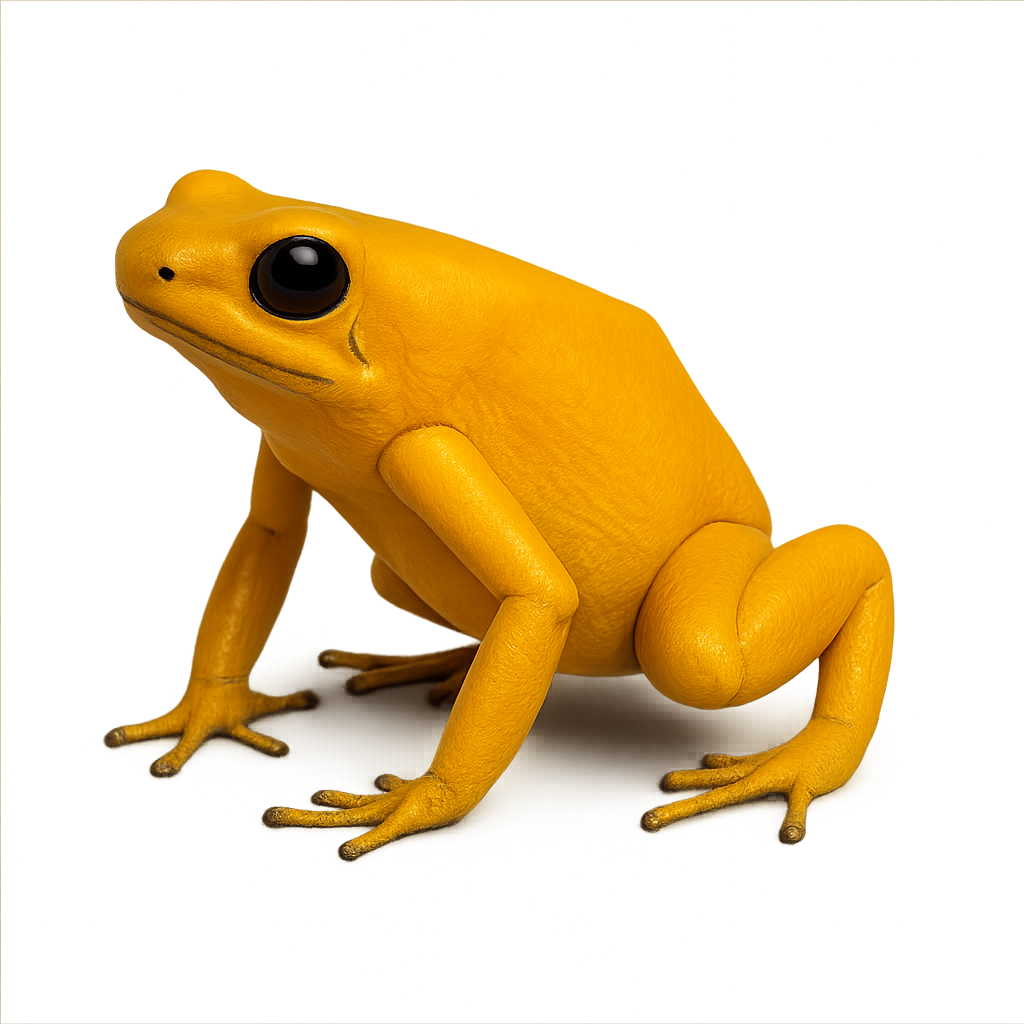Your wildlife photography guide.
Explore the golden poison dart frog in detail, study its behavior, prepare your shots.
Where to observe and photograph the golden poison dart frog in the wild
Learn where and when to spot the golden poison dart frog in the wild, how to identify the species based on distinctive features, and what natural environments it inhabits. The WildlifePhotographer app offers tailored photography tips that reflect the golden poison dart frog’s behavior, helping you capture better wildlife images. Explore the full species profile for key information including description, habitat, active periods, and approach techniques.
Golden poison dart frog
Scientific name: Phyllobates terribilis

IUCN Status: Critically Endangered
Family: DENDROBATIDAE
Group: Amphibians
Sensitivity to human approach: Very shy
Minimum approach distance: 2 m
Reproduction period: January to December
Incubation: 7-10 jours
Births: January to December
Habitat:
Forests and humid tropical areas
Activity period :
Primarily active during the day, with peak activity in the morning and late afternoon.
Identification and description:
The Golden poison dart frog, also known as the Terrible Dart Frog, is considered one of the most toxic animals in the world. Native to the tropical forests of Colombia, this small frog is distinguished by its bright yellow color, which serves as a warning to predators of its toxicity. It derives its toxin from its diet, primarily consisting of insects found in its natural habitat. These frogs are not toxic in captivity as their diet changes. Despite its toxicity, it has been used by some cultures to poison the tips of their arrows, earning it the name 'poison dart frog.'
Recommended lens:
Macro – adjust based on distance, desired framing (portrait or habitat), and approach conditions.
Photography tips:
Photograph the Golden poison dart frog from a distance using a telephoto lens to avoid disturbing it. Use soft lighting to capture its vibrant colors without creating harsh shadows. As a discreet predator, it is best to photograph the frog when it is perched on natural substrates, such as a leaf or branch. Be sure to follow local wildlife photography regulations, remaining discreet and respectful of its environment.
The WildlifePhotographer App is coming soon!
Be the first to explore the best nature spots, track rutting seasons, log your observations, and observe more wildlife.
Already 1 430 wildlife lovers subscribed worldwide

